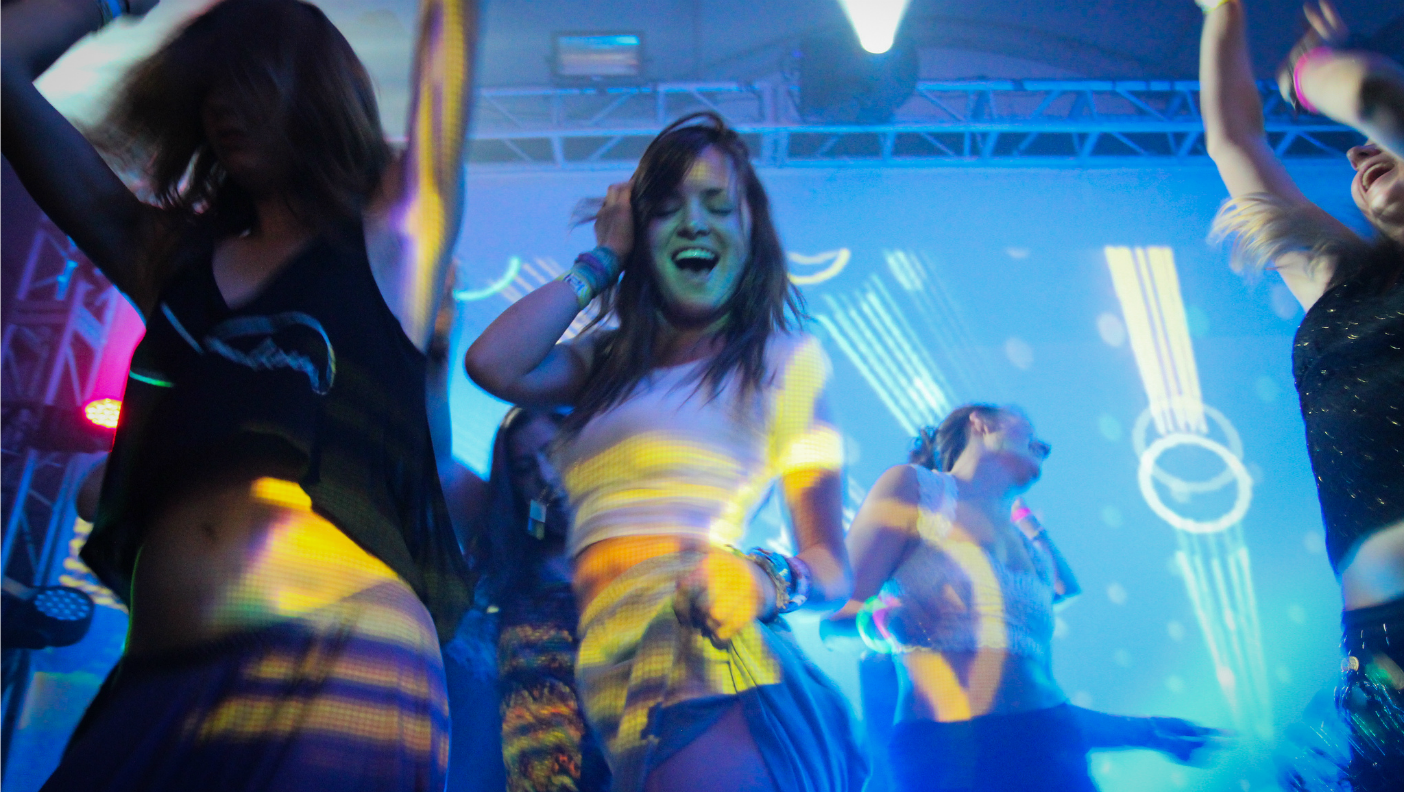
“We’re fools whether we dance or not, so we might as well dance.” – Japanese Proverb
From Zumba classes to Buti and Deep House Yoga, and shamanic forms of “trance dance” as a healing mechanism, it’s clear that dancing is good for the body and soul. But aside from being a great source of cardio and a powerful emotional release, what happens when we synchronize that dance with others? Can it have a greater mind-body impact? A new study published in The Royal Society claims so.
A group of 264 young participants were studied in Brazil recently, all of whom were asked to dance. They were broken into different groups, some who danced individually and some with less rigor, while others as part of a synchronized dance with others. Their pain threshold afterward was then monitored by a blood pressure cuff, which determined how much pressure they could withstand.
It was observed that those who danced with more gusto could withstand more pain, due to the greater levels of endorphins released. But even more interesting were the findings that those who danced in synchronized movement with others fostered a greater sense of bonding and connection, thus yielding the highest pain threshold. As it turns out, the state of oneness that is often achieved by dance becomes heightened when matching the rhythm and groove with another human being.
The Conversation has the full report:
So far, our testing of the “social bonding” hypothesis of dance has focused on one particular aspect: synchronisation with other people. It turns out that when you synchronise even a small movement, like the tapping of your finger in time with someone else, you feel closer and more trusting of that person than if you had tapped out of time.
This is because when we watch someone else do the same thing at the same time as us, our brain ends up with a merged sense of us and them. It feels like we “become one.” Anyone who has ever rowed might be familiar with that moment when you hit a state of perfect synchronisation with your rowing team. Suddenly you feel like you are part of something bigger than just yourself, and that you belong.
Dance can be both exertive and synchronised, so we wanted to see what the relative effects of both these aspects might be on bonding and on endorphins. As it’s hard to measure endorphin levels directly, we used pain thresholds as an indirect measure. More endorphins mean we tolerate pain better, so measuring relative increases in people’s pain thresholds can indicate whether endorphins are being released.
And not only does dancing make us more resilient and compassionate beings, it can also help us live longer and with more vitality, even lowering the risk of dementia as we age. But dancing with others is for many, also more appealing than solo activities. Because historically, we’re much more committed to our fitness regimen when we enlist a buddy to hold us accountable, right?
Berkeley Wellness offers more insight:
Though other forms of exercise can have many of the same benefits, dancing is more appealing to some people, so they are more likely to stick with it.
For example, at the end of a study that compared tango dancing to mindfulness meditation, 97 percent of participants chose to receive a voucher for a tango class rather than one for mindfulness meditation. (By the way, the study found that both activities reduced depression, but only dancing reduced stress levels.) In another study, attendance was higher with waltzing than conventional exercise, possibly because “dance is a form of exercise in which movement, social interaction, and fun are mixed together,” the researchers said.
While we don’t recommend nixing your meditation practice altogether, we do agree that certain types of dance can lead to a meditative experience. So it’s fine if you’re better off dancin’ with yourself, but if you’d really like the full benefits of this ancient healing art form, remember—it really does take two to tango.
—
 Andrea Rice is the Practice and Community Editor for Wanderlust Media. She is also a writer and yoga teacher. Her work has appeared in The New York Times, Yoga Journal, mindbodygreen, Yoganonymous, AstroStyle, and several music magazines. Her teaching style is a blend of her love for music and intuitive movement, with emphasis on core strength. You can find her regular classes at Shambhala Yoga in Brooklyn and connect with her on Instagram and Twitter.
Andrea Rice is the Practice and Community Editor for Wanderlust Media. She is also a writer and yoga teacher. Her work has appeared in The New York Times, Yoga Journal, mindbodygreen, Yoganonymous, AstroStyle, and several music magazines. Her teaching style is a blend of her love for music and intuitive movement, with emphasis on core strength. You can find her regular classes at Shambhala Yoga in Brooklyn and connect with her on Instagram and Twitter.